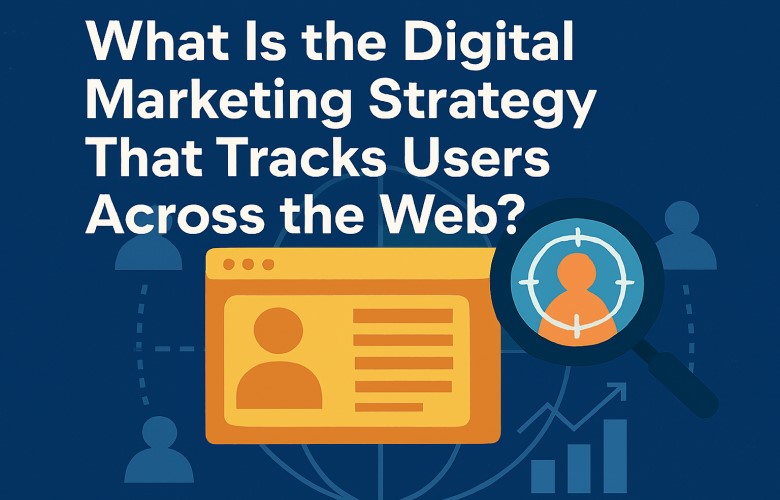Table of Contents
Brands don’t just market to you while you’re on their website, they often follow you across the internet, delivering tailored messages wherever you go. This marketing approach is known as retargeting (or remarketing), and it’s one of the most powerful tools in a digital marketer’s arsenal.
Whether you’ve shopped for shoes, browsed vacation packages, or researched a new laptop, you’ve probably noticed ads for those same products popping up on other sites. That’s not coincidence, it’s the result of a sophisticated tracking strategy like What Is the Digital Marketing Strategy That Tracks Users Across the Web?
Understanding Retargeting (Remarketing)
Retargeting is a digital marketing technique that uses tracking technologies such as cookies, pixels, and device IDs, to identify people who have interacted with your brand online. Once identified, these users are shown targeted ads across various websites, apps, and social media platforms.
Read This: What is B2B Sales? A Complete Guide for Beginners
For example:
- You visit an online clothing store.
- The store’s website drops a tracking cookie or records your activity using a pixel.
- As you browse the internet later, ad networks use this data to serve you personalized ads for that same store.
How Retargeting Works
- User Visits a Website – A tracking code (pixel) is placed on the visitor’s browser.
- Behavior Is Logged – The system records actions such as product views, cart additions, or downloads.
- Ad Networks Identify the User – Platforms like Google Ads, Facebook Ads, or programmatic networks recognize the tracked user across the web.
- Personalized Ads Appear Elsewhere – These ads “follow” the user to other sites, encouraging them to return and complete a purchase.
Read This: How to Create an Amazon Seller Account: Step-by-Step Guide
Why Businesses Use This Strategy
- Boosts Conversions – Retargeting brings back visitors who are already interested in your products.
- Increases Brand Recall – Seeing your brand repeatedly across the web reinforces recognition.
- Targets Warm Leads – Instead of advertising to random audiences, you’re speaking directly to people who’ve shown interest.
- Improves ROI – Retargeted users are more likely to convert, making ad spend more efficient.
Popular Platforms for Retargeting
- Google Display Network – Reaches over 90% of internet users worldwide.
- Facebook & Instagram Retargeting – Allows hyper-specific audience targeting.
- LinkedIn Retargeting – Great for B2B campaigns.
- Programmatic Ad Platforms – Use AI to automate bidding and placement across multiple sites.
Read This: How Much Is Insurance for a Small Business?
Privacy Concerns & Evolving Rules
While retargeting is effective, it also raises privacy questions. With regulations like GDPR (Europe) and CCPA (California), businesses must be transparent about data collection and give users the option to opt out. Major browsers are also phasing out third-party cookies, prompting a shift toward first-party data and privacy-friendly tracking methods.
The Future of Tracking Across the Web
As technology and privacy laws evolve, retargeting strategies will adapt:
- Server-Side Tracking for more secure data handling.
- Contextual Advertising based on site content rather than personal history.
- AI-Powered Predictive Audiences to anticipate user interests without invasive tracking.
Read This: YouTube Desktop Dashboard: A Complete Guide for Creators
Final Thoughts
The digital marketing strategy that tracks users across the web is retargeting a method that keeps your brand in front of warm leads until they’re ready to take action. When done right, it’s not about stalking users, but about offering them relevant, timely reminders that meet their needs.
Used ethically and paired with strong privacy practices, retargeting remains one of the most cost-effective ways to turn browsers into buyers.

